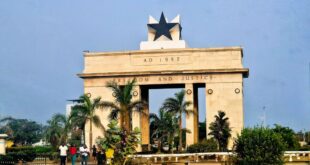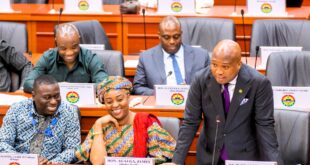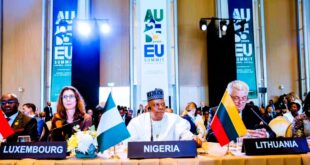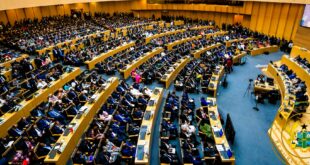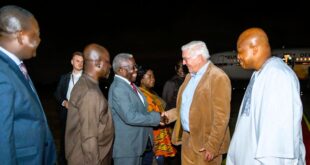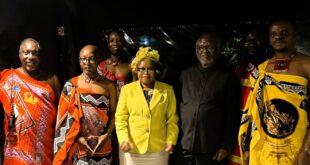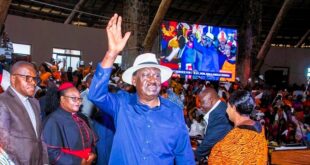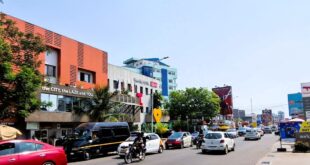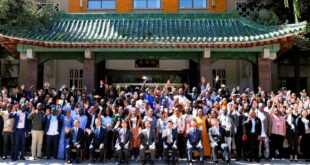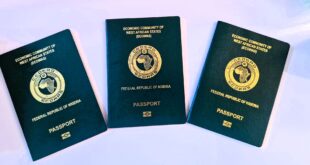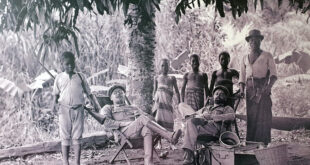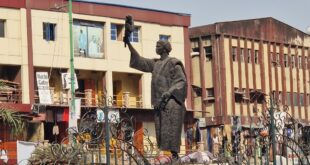BOOK REVIEW
It is easy, as the western media often do, to dismiss Africa as a continent of misery where nothing new happens except this misery is recycled in new varieties: corruption, hunger, wars, etc. But nobody pauses to take a harder look into the past of this troubled continent and find how its terrible history has played a part in its present woes, writes Germany-based Dr Osei Asante Gyapong. His review of Adam Hochschild’s King Leopold’s Ghost links the misery of the Congolese people of today to the horrors to which the tyranny of King Leopold subjected Congo in the not too distant past
What Goodyear mostly reminds us of and has in common with Michelin tyres, and erasers is rubber. Belgium, a quiet little country in Europe that is rather vague and mostly brings to mind a political system that is fallible to corruption and ethnic divisionism. The journalist and adventurer Henry Morton Stanley.
What do these – Stanley, Belgium and rubber – have in common? They all directly or indirectly share the legacy of one man. A man whose story of greed, brutality and exploitation, led to the massacre of 10 million Africans in the Congo and the devastation of a country. The man is King Leopold II of Belgium also known as the Butcher of Congo.

In the year 1872, Leopold, who had always despised his country’s small size was possessed with the idea of owning a colony, an attribute which would give Belgium and thus him, more weight in an international community, where most major players such as England, France or Spain all had colonies.
His chance came in the spring of the same year as he met Welsh-born Henry Morton Stanley, soldier, sailor, journalist, adventurer-explorer and member of the British parliament.
Leopold who was now concentrating on Africa saw this as an opportunity to get a country he craved for most, Congo. Although never having been there (Leopold never set a foot in Congo or any other African country in all the 23 years of his rule), his accumulated knowledge of the country told him that this would be the ideal colony.
Mission to colonise Congo
Stanley set off for Africa. Mission: To colonise Congo for King Leopold.
Although utterly beyond comprehension that one man could go into another continent and colonise a country there for someone else, this is exactly what Stanley did for Leopold.
Using superior gun power, brutality, cheap European products such as glass beads. And, also exploiting the naivety of the African kings and people (not very different from what is happening on the continent today), Stanley got the Congolese chiefs to sign treaties. The signing of these so-called treaties were the ‘Xs’ that were placed on the documents, which gave King Leopold absolute power and monopoly over their territories.

The strange thing however is that none of these documents were in the languages of the people. All the chiefs, 450 in number, signed documents in a foreign language which they could neither read nor write. It makes it more so amazing that they were accepted as valid.
By the end of 1884, the greater part of Congo belonged to King Leopold (it was his private property) and Stanley was on his way back home.
Scramble for rubber and genocide in the Congo
At the time Leopold became the new owner of Congo, ivory was the item of the day. Hundreds upon hundreds of elephants were killed for their tusks which were then exported to Europe. But as a piece of news had caught Leopold’s attention some years earlier and thus brought himself and Morton Stanley together, so was another piece of news about to change the fate of Congo forever.
John Dunlop, an Irish veterinary surgeon, had discovered how to make inflatable rubber tire for bikes, some years after the American inventor Charles Goodyear had accidentally created the new form of rubber.
READ ALSO Why Belgian king’s apology to DR Congo is insincere
Although the scramble for Africa was in full effect, the scramble for rubber had just began and Leopold had a head start.
The vast territory of Congo, which at that time was bigger than England, France, Germany, Spain and Italy combined, had a huge rain forest teeming with rubber. Rubber meant money and wealth and all Leopold had to do was to tap into it. This is where the genocide in Congo reached its peak and became the most murderous episode of the European scramble for Africa.
Forced labour, hostages, slave chains, slaughtering were all forms of methods to succumb the Congolese.
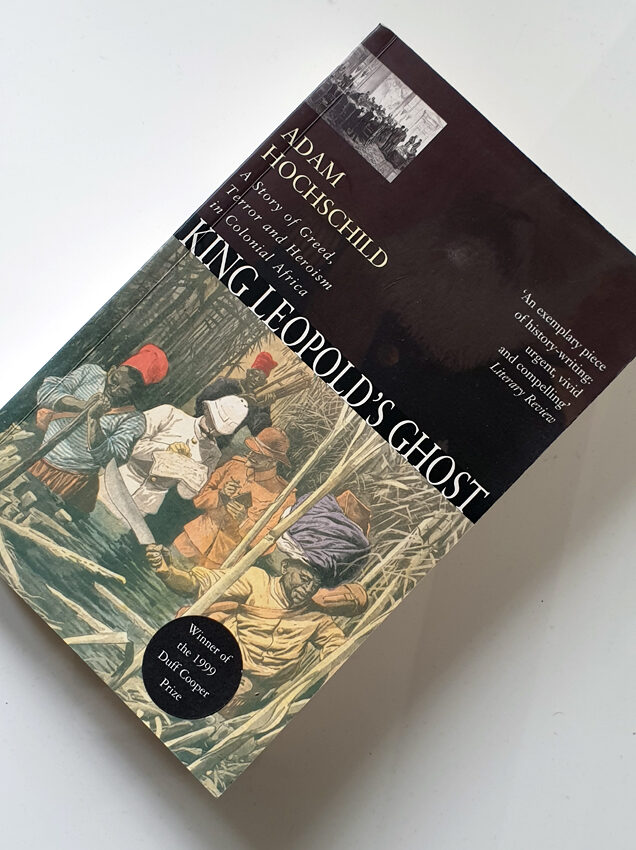
As Leopold’s greed increased and the resistance on the side of the natives also increased, the brutality employed to increase the production of rubber also increased. Leopold had the order passed to his private army in Congo, the Force Publique, to raid the rebellious villages and kill their inhabitants.
However since supplies had to be shipped in from Europe and to make sure that ammunition was used to kill and not for hunting animals, a rule was made, which required all soldiers to deliver the amputated right hand of every person they killed, to match with the bullets used (ammunition handed out was always counted).
Sometimes soldiers shot an animal and then cut of the right hand of a living person. Cases of sliced penises were also documented.
READ ALSO Why Belgian king’s apology to DR Congo is insincere
Whilst millions of Congolese were being massacred in Africa, Leopold used his newly amassed wealth to pave the streets of Belgium. The brutality of the Congo regime was even appalling to other Europeans who were also at that time also building up empires on the backs of slaves or oppressed peoples in distant lands.
A brutality which is portrayed in Joseph Conrad’s famous book The Heart of Darkness”, based upon his journey through the Congo at the time of Leopold’s rule.
In his book, King Leopold’s Ghost, Adam Hochschild, an American journalist and author, not only documents the ferociousness with which a country was stripped of its resources and its people, but also of one man‘s moral campaign to bring down this terrible regime.
Edmund Dene Morel, a clerk of a Liverpool shipping agency, who accidentally found out that, whilst rubber and ivory were being shipped out of Congo to Antwerp, only guns and soldiers were going in the opposite direction, started an enormous campaign that would finally expose King Leopold and bring him to his knees.
In the end, after Britain and America were more or less compelled to take action, the Belgian government stepped in and bought Congo from Leopold in 1908.
Hochschild writes in his book, “From the colonial era, the major legacy left for Africa was not democracy as it is practised today in countries like England, France and Belgium, it was an authoritarian rule and plunder. On the whole continent perhaps no nation has had a harder time than the Congo in emerging from the shadow of its past”.
Dr Osei Asante Gyapong is a practising dentist in Wiesbaden, Germany
—-
King Leopold’s Ghost by Adam Hochschild, Macmillan, ISBN 0 333 76544 3
 THE AFRICAN COURIER. Reporting Africa and its Diaspora! The African Courier is an international magazine published in Germany to report on Africa and the Diaspora African experience. The first issue of the bimonthly magazine appeared on the newsstands on 15 February 1998. The African Courier is a communication forum for European-African political, economic and cultural exchanges, and a voice for Africa in Europe.
THE AFRICAN COURIER. Reporting Africa and its Diaspora! The African Courier is an international magazine published in Germany to report on Africa and the Diaspora African experience. The first issue of the bimonthly magazine appeared on the newsstands on 15 February 1998. The African Courier is a communication forum for European-African political, economic and cultural exchanges, and a voice for Africa in Europe.




